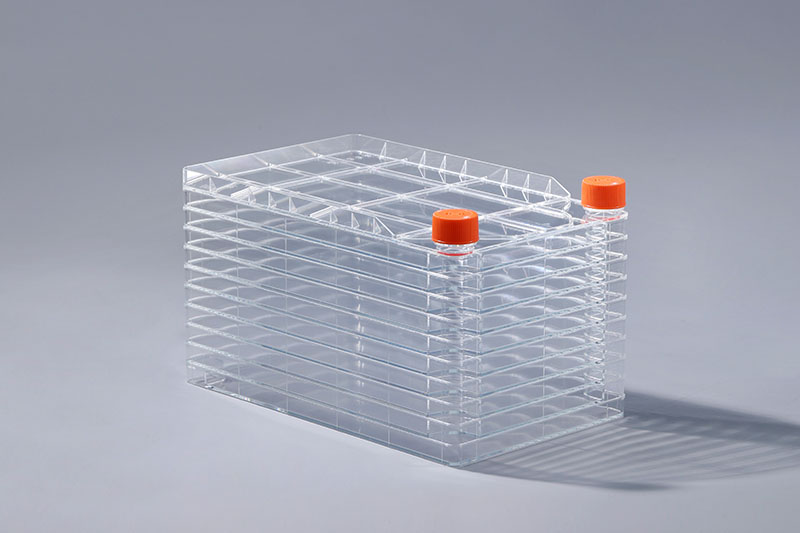Cell factories are production devices for large-scale cell culture, which are widely used in the fields of vaccines, modern biotechnology and genetic engineering, stem cells and somatic cell therapy. The cell factory is different from the general cell consumables, the use process is more complicated, and it must be operated according to the established operation method.
The operation of dividing the liquid level of each layer of the cell factory is as follows:
1. Pour the culture medium directly into the cell factory;
2. Place the cell factory towards the side with the small opening and balance for a period of time;
3. Turn the cell factory 90 degrees, with the side with the liquid inlet facing up, and let it stand for a period of time, the medium will be automatically and evenly distributed to each layer of chambers;
4. Hold one side of the liquid inlet with both hands, slowly bring down the cell factory, and place it horizontally by programming. Do not hold the edge of the first layer to prevent damage.
Precautions:
1. When moving the cell factory, try to keep it as level as possible, otherwise each layer of solution will be uneven;
2. The platform or shelf on which the cell factory is placed must be level to prevent the thickness of the cell solution in the same layer from being different;
3. Since the liquid inlet of the cell factory is made of materials with a low melting point, care should be taken during flame protection to prevent deformation;
4. When cleaning the cell factory, such as flushing with water, do not use rapid water to wash, so as not to cause damage to the cell factory;
5. When the four-layer cell factory is observed under a microscope, only the state of the cells in the bottom layer can be seen, and the observation of the cell state in the 10th or 40th layer requires a four-layer cell flask for control observation.
Cell factories have many advantages of convenient cell culture, which can save a lot of manpower, material resources, and space, and have become one of the necessary consumables for large-scale cell culture.
The FAI climbed 5.9 percent year-on-year in the first 11 months of 2018, quickening from the 5.7-percent growth in Jan-Oct, the National Bureau of Statistics (NBS) said Friday in an online statement.
The key indicator of investment, dubbed a major growth driver, hit the bottom in August and has since started to rebound steadily.
In the face of emerging economic challenges home and abroad, China has stepped up efforts to stabilize investment, in particular rolling out measures to motivate private investors and channel funds into infrastructure.
Friday's data showed private investment, accounting for more than 60 percent of the total FAI, expanded by a brisk 8.7 percent.
NBS spokesperson Mao Shengyong said funds into weak economic links registered rapid increases as investment in environmental protection and agriculture jumped 42 percent and 12.5 percent respectively, much faster than the average.
In breakdown, investment in high-tech and equipment manufacturing remained vigorous with 16.1-percent and 11.6-percent increases respectively in the first 11 months. Infrastructure investment gained 3.7 percent, staying flat. Investment in property development rose 9.7 percent, also unchanged.
 English
English



















































